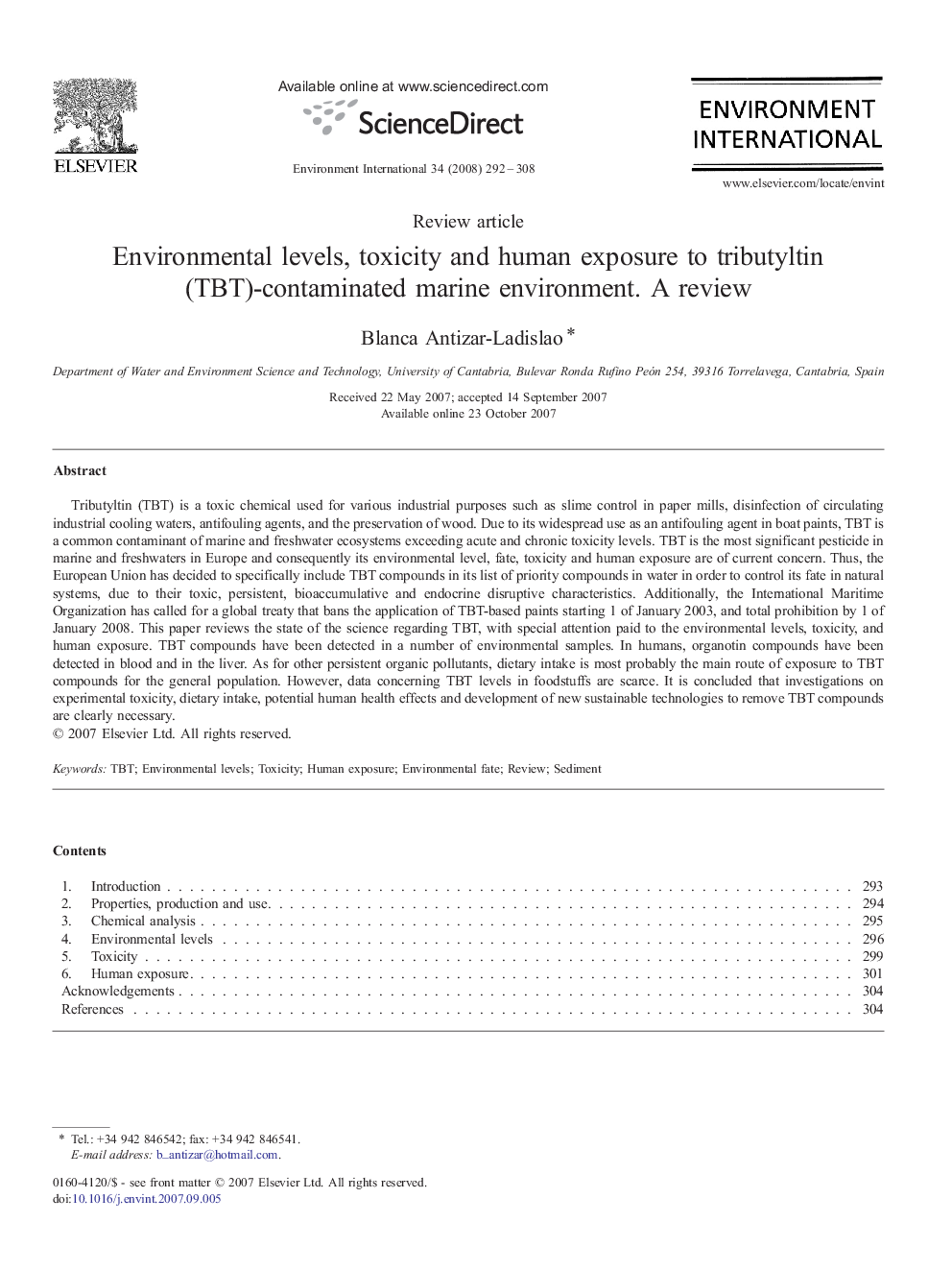| کد مقاله | کد نشریه | سال انتشار | مقاله انگلیسی | نسخه تمام متن |
|---|---|---|---|---|
| 4423809 | 1308845 | 2008 | 17 صفحه PDF | دانلود رایگان |

Tributyltin (TBT) is a toxic chemical used for various industrial purposes such as slime control in paper mills, disinfection of circulating industrial cooling waters, antifouling agents, and the preservation of wood. Due to its widespread use as an antifouling agent in boat paints, TBT is a common contaminant of marine and freshwater ecosystems exceeding acute and chronic toxicity levels. TBT is the most significant pesticide in marine and freshwaters in Europe and consequently its environmental level, fate, toxicity and human exposure are of current concern. Thus, the European Union has decided to specifically include TBT compounds in its list of priority compounds in water in order to control its fate in natural systems, due to their toxic, persistent, bioaccumulative and endocrine disruptive characteristics. Additionally, the International Maritime Organization has called for a global treaty that bans the application of TBT-based paints starting 1 of January 2003, and total prohibition by 1 of January 2008. This paper reviews the state of the science regarding TBT, with special attention paid to the environmental levels, toxicity, and human exposure. TBT compounds have been detected in a number of environmental samples. In humans, organotin compounds have been detected in blood and in the liver. As for other persistent organic pollutants, dietary intake is most probably the main route of exposure to TBT compounds for the general population. However, data concerning TBT levels in foodstuffs are scarce. It is concluded that investigations on experimental toxicity, dietary intake, potential human health effects and development of new sustainable technologies to remove TBT compounds are clearly necessary.
Journal: Environment International - Volume 34, Issue 2, February 2008, Pages 292–308